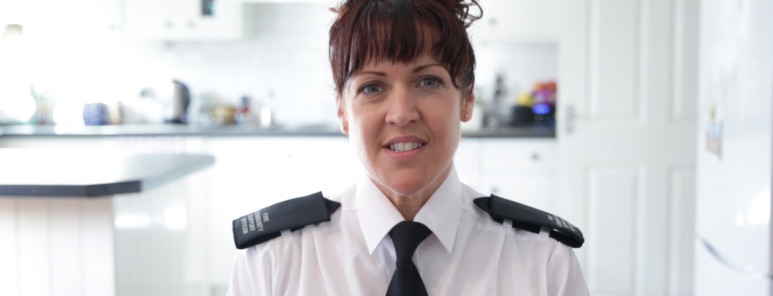Based upon the answers you provided, we believe you are at lower risk of suffering an accidental house fire.
We have provided some information below to help you carry out your own assessment of the safety of your home. The information includes identifying possible fire risks, where to place smoke alarms and how to test them and information on what to do if you do discover a fire in your home.
If you live in a privately rented home, your landlord has a legal responsibility to provide you with working smoke alarms. You can find out more here
The aim of this short guide is to give you a few simple tips to carry out a basic safety check of your home.
Step One: Smoke alarms
Video containing advice on smoke alarms played through YouTube
Video descriptive text transcript
Working smoke alarms give you an early warning to a fire in your home, giving you and your family extra time to take action and escape.
Things to do:
- Look– have a look around your home. Do you have smoke alarms fitted? You should have at least one smoke alarm on every level of your home
- Test– do your smoke alarms work? You can check the batteries by holding down the ‘test’ button until they bleep
- Fit– if you need to replace or fit new smoke alarms, these can be bought from most supermarkets or DIY stores and cost as little as £5 each. They can be fitted using screws or and should be placed on the ceiling
Step two: Kitchen hazards
Video containing advice on kitchen hazards played through YouTube
Video descriptive text transcript
Most fires start in the kitchen, but can be easily stopped from happening in the first place.
Things to check:
- Make sure electrical leads, cardboard and fabrics are well away from the hob
- Is your oven or grill pan dirty? Large build ups of fat or grease can sometimes ignite and cause fires
Things to do:
- Switch off cooking appliances when you’ve finished cooking and before you go to bed
- Never cook using a chip pan or pan full of hot oil. Oven chips or thermostat controlled fryers are much safer
Step three: Electrical hazards
Video containing advice on electrical hazards played through YouTube
Video descriptive text transcript
Things to check:
- Look out for signs of dangerous or loose wiring, such as scorch marks, hot plugs and sockets and fuses that blow
- Make sure high powered appliances like washing machines have a single plug to themselves- you shouldn’t use extension leads for things like this
- Check how many plugs are plugged into your extension leads, as they can normally only take a maximum of 13 amps. Never plug an adaptor into another adaptor.
Step four: Bedtime routine
Video containing advice on bedtime routines played through YouTube
Video descriptive text transcript
Most fire deaths happen at night. Before you go to bed, there are some simple things you can do to stay safe.
Check your escape routes are clear of obstacles and keys are where you and your family can find them if they need to get out quickly in the event of a fire.
Close internal doors at night. If a fire does start, this stops it from spreading as fast
Switch off electrical appliances including cookers, washing machines, heaters, laptops and chargers, unless they are meant to be left on, like fridges and freezers
There is more information about staying safe from fire in our HSC2 Booklet for Homeowners

